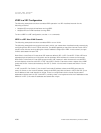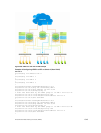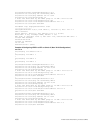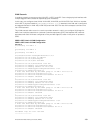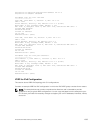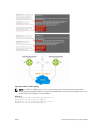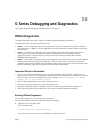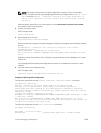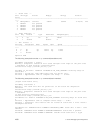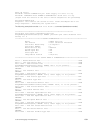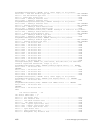
NOTE: You must configure a virtual link local (fe80) address for each VRRPv3 group created for an
interface. The VRRPv3 group becomes active as soon as you configure the link local address.
Afterwards, you can configure the group’s virtual IPv6 address.
R2(conf-if-te-1/1/1-vrid-10)#virtual-address fe80::10
NOTE: The virtual IPv6 address you configure should be the same as the IPv6 subnet to which the
interface belongs.
R2(conf-if-te-1/1/1-vrid-10)#virtual-address 1::10
R2(conf-if-te-1/1/1-vrid-10)#no shutdown
R2(conf-if-te-1/1/1)#show config
interface TenGigabitEthernet 1/1/1
ipv6 address 1::1/64
vrrp-group 10
priority 100
virtual-address fe80::10
virtual-address 1::10
no shutdown
R2(conf-if-te-1/1/1)#end
R2#show vrrp
------------------
TenGigabitEthernet 1/1/1, IPv6 VRID: 10, Version: 3,
Net:fe80::201:e8ff:fe6a:c59f
State: Master, Priority: 100, Master: fe80::201:e8ff:fe6a:c59f (local)
Hold Down: 0 centisec, Preempt: TRUE, AdvInt: 100 centisec
Accept Mode: FALSE, Master AdvInt: 100 centisec
Adv rcvd: 0, Bad pkts rcvd: 0, Adv sent: 135
Virtual MAC address:
00:00:5e:00:02:0a
Virtual IP address:
1::10 fe80::10
NOTE: Although R2 and R3 have the same default . priority (100), R2 is elected master in the VRRPv3
group because the Tengigabitethernet 1/1 interface has a higher IPv6 address than the
Tengigabitethernet 1/2 interface on R3.
Router 3
R3(conf)#interface tengigabitethernet 1/2/1
R3(conf-if-te-1/2/1)#no ipv6 address
R3(conf-if-te-1/2/1)#ipv6 address 1::2/64
R3(conf-if-te-1/2/1)#vrrp-group 10
R2(conf-if-te-1/2/1-vrid-10)#virtual-address fe80::10
R2(conf-if-te-1/2/1-vrid-10)#virtual-address 1::10
R3(conf-if-te-1/2/1-vrid-10)#no shutdown
R3(conf-if-te-1/2/1)#show config
interface TenGigabitEthernet 1/2/1
ipv6 address 1::2/64
vrrp-group 10
priority 100
virtual-address fe80::10
virtual-address 1::10
no shutdown
R3(conf-if-te-1/2/1)#end
R3#show vrrp
------------------
TenGigabitEthernet 1/2/1, IPv6 VRID: 10, Version: 3, Net: fe80::201:e8ff:fe6b:
1845
Virtual Router Redundancy Protocol (VRRP)
1055




